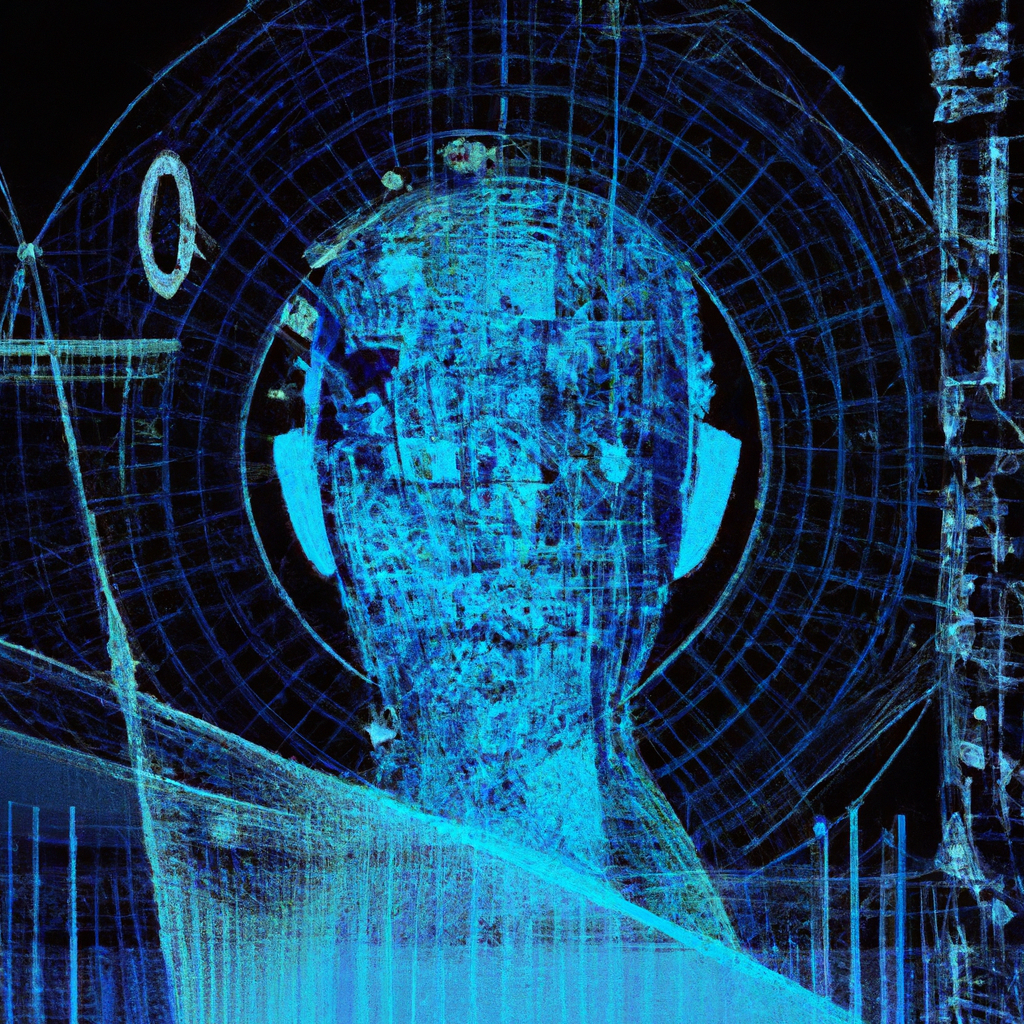Imagine a world where computers write just like humans – flawlessly, quickly, and with captivating style. You might be wondering, “How does AI writing work?” Well, in this article, we will unravel the mystery behind this revolutionary technology and explore the fascinating process by which artificial intelligence creates written content. Get ready to dive into the exciting world of AI writing and discover the inner workings behind this impressive innovation.
Understanding AI Writing
Artificial Intelligence (AI) writing is an innovative technology that utilizes various techniques and algorithms to generate human-like text. It involves the development of AI models, which are trained on vast amounts of data to comprehend and produce written content. AI writing has gained significant popularity in recent years due to its potential to revolutionize various industries. From content creation to language translation and even chatbot interactions, AI writing has shown immense potential in automating tasks and assisting humans in their daily lives.
What is AI Writing?
AI writing refers to the use of artificial intelligence algorithms and techniques to generate written content. It enables machines to understand human language, process information, and create coherent text that mimics the style and tone of human writing. AI writing models are trained on massive datasets and are capable of producing a wide range of outputs, such as articles, essays, emails, and even poetry. By leveraging advanced algorithms and deep learning methods, AI writing intends to replicate human-like language generation with the aim of assisting or even replacing human writers in certain scenarios.

Purpose of AI Writing
The primary purpose of AI writing is to automate the process of content creation and assist humans in generating high-quality text efficiently. AI writing models can generate vast amounts of content in a short span of time, saving hours of labor for writers. This technology is particularly useful in industries that require large volumes of text, such as journalism, content marketing, and e-commerce. AI writing can also aid individuals who struggle with writing, offering assistance in crafting grammatically correct and engaging content.
Applications of AI Writing
AI writing has diverse applications across numerous industries and domains. Here are some notable examples:
-
Content Generation: AI writing can automatically generate articles, blog posts, product descriptions, and social media content. It can produce content tailored to specific topics, styles, or target audiences.
-
Language Translation: AI writing can facilitate seamless translation between languages. It can analyze and understand the syntax and semantics of text in one language and generate accurate translations in another.
-
Chatbots and Conversational Agents: AI writing enables the development of intelligent chatbots and conversational agents. These virtual assistants can communicate with users, answer questions, and provide support through text-based platforms.
-
Proofreading and Editing: AI writing models can assist in proofreading and editing written content. They can identify grammatical errors, suggest improvements, and ensure a high level of accuracy and clarity in the text.
-
Creative Writing and Storytelling: AI writing can be utilized in creative endeavors, such as generating poetry, storylines, or even song lyrics. It can aid writers in exploring new ideas and expanding their creative horizons.
-
Personalized Recommendations: AI writing models can analyze user preferences and generate personalized recommendations for various forms of content, including books, movies, and music.
With these diverse applications, AI writing has the potential to transform the way we create, consume, and interact with written content.

Techniques and Algorithms Involved
AI writing relies on a combination of techniques and algorithms to achieve its objectives. These include:
Natural Language Processing (NLP)
At the core of AI writing is Natural Language Processing (NLP), an interdisciplinary field that focuses on interactions between computers and human language. NLP techniques allow AI models to understand and analyze textual data, enabling accurate language processing and generation.
Machine Learning (ML)
Machine Learning is a subset of AI that focuses on algorithms and models that can learn from data and make predictions or take actions based on that learning. In the context of AI writing, machine learning algorithms are used to train models to generate text that closely resembles human writing.
Deep Learning (DL)
Deep Learning is a subset of Machine Learning that utilizes neural networks with multiple layers to extract intricate patterns and relationships from data. Deep Learning is particularly effective in understanding and generating human language, making it a crucial component of AI writing models.
Recurrent Neural Networks (RNN)
Recurrent Neural Networks are a type of deep learning model that can process sequences of data, making them suitable for handling textual information. RNNs have a memory-like property that allows them to capture dependencies and context in human language, enabling AI writing models to generate coherent and contextually relevant text.
GPT-3 (Generative Pre-trained Transformer 3)
GPT-3, developed by OpenAI, is one of the most advanced AI writing models to date. It employs a deep learning architecture called the Transformer Network, which has revolutionized natural language processing tasks. GPT-3 has been trained on an exceptionally large dataset, giving it the ability to generate highly coherent and contextually rich text across various domains.
By combining these techniques and algorithms, AI writing models can understand, process, and generate human-like text, making them indispensable tools for a wide range of applications.
Data Collection and Training
To develop an AI writing model, a substantial amount of data is required. This data serves as the foundation for the model’s learning process. Here’s a breakdown of the key steps involved in data collection and training:
Collection of training data
The first step in building an AI writing model is to gather a diverse and extensive dataset. This dataset consists of written content from various sources, such as books, articles, websites, and even social media. The training data should cover a wide range of topics and writing styles to ensure the model’s generalizability.
Data preprocessing
Once the training dataset is collected, it undergoes preprocessing to clean and standardize the text. This preprocessing stage involves removing irrelevant characters, correcting spelling errors, and eliminating unnecessary formatting. The goal is to obtain consistent and pristine text that can be effectively utilized during the training process.
Building the AI model
After data preprocessing, the AI model is constructed using the chosen techniques, such as deep learning architectures and algorithms. The model’s architecture is designed to handle the complexities of natural language processing and generation. This step involves determining the number of layers, the size of the model, and other relevant parameters that best suit the desired application.
Training the AI model
The final step is training the AI model on the prepared dataset. This process involves feeding the training data to the model, enabling it to learn from the patterns and characteristics present in the text. The model adjusts its parameters iteratively to improve its performance in generating text that resembles human writing. This training phase requires powerful computing resources and can take a significant amount of time.
After completion, the trained AI model is ready to generate text based on the patterns and knowledge it has acquired during the training process. The quality and accuracy of the generated text depend on the size and diversity of the training dataset, as well as the effectiveness of the chosen AI techniques and algorithms.
Natural Language Processing (NLP)
Natural Language Processing (NLP) plays a fundamental role in AI writing, enabling machines to understand, process, and generate human language. Here are some key components of NLP:
Understanding human language
NLP techniques allow AI models to comprehend and interpret human language. This involves understanding the underlying meaning, grammar, and structure of the text. By employing language models that have been trained on vast amounts of data, AI writing can decipher the intricacies of human communication and produce coherent and contextually relevant text.
Tokenization
Tokenization is the process of breaking down text into smaller units, such as words, sentences, or even individual characters. Tokenization is crucial for several NLP tasks as it provides the AI model with a clear representation of the textual data. By dividing the text into tokens, the model can understand and process each element independently before generating a comprehensive output.
Part-of-speech (POS) tagging
POS tagging involves labeling each word in a piece of text with its corresponding part of speech, such as noun, verb, adjective, or adverb. By assigning these labels, AI models can better understand the syntactic structure of the text, which aids in generating grammatically correct and coherent sentences.
Named Entity Recognition (NER)
Named Entity Recognition focuses on identifying and classifying named entities within a text. This includes recognizing names of people, organizations, locations, dates, and more. NER is crucial for understanding the context and information mentioned in a piece of text, allowing AI writing models to generate relevant and accurate content.
Semantic Analysis
Semantic analysis aims to extract the meaning and intent behind textual data. It analyzes the relationships between words, sentences, and concepts to grasp the overall context and sentiment of the text. By incorporating semantic analysis, AI writing models can generate content that aligns with the intended meaning and tone of the input.
Text Generation
Text generation is a core capability of AI writing enabled by NLP techniques. By leveraging the knowledge learned from training data, AI models can generate natural and coherent text based on a given prompt or input. The generated text can emulate various writing styles, adapt to different tones, and even mimic the voice of specific authors or personas.
Through NLP techniques, AI writing models can understand and manipulate human language, allowing for the creation of sophisticated and contextually accurate text across a wide range of applications.



Comments are closed